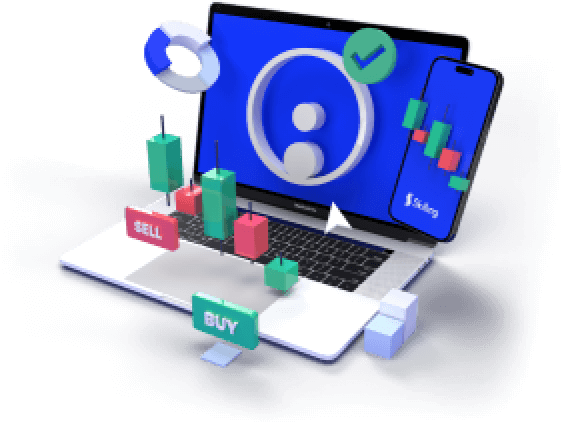As Sweden’s major banks prepare to release their Q2 2025 earnings this week, traders and CFD-investors are watching closely. With central bank policy shifting and margins under pressure, this round of earnings could typically signal the next major move for financial stocks in the Nordics.
What You’ll Learn in This Article
- What analysts expect from Handelsbanken, Swedbank, SEB, and Nordea in Q2.
- Why net interest income (NII) is the key battleground for earnings.
- The trading opportunities that CFD-trading clients are watching.
- What strong cost control and stable capital buffers could mean for bank shares in the months ahead.

Context: Why This Quarter Matters
The Swedish banking sector enters Q2 earnings season under a different set of conditions than we’ve seen in over a year. The Riksbank has already kicked off rate cuts, and loan demand is slowing. For investors trading CFDs on Swedish banks, this marks a turning point: Will margins compress faster than expected, or will cost cuts and trading income support the bottom line?
In short: traders are looking not just at the headline numbers, but at the narrative shift.
1. Net Interest Income Is Under Pressure
Arguably the most important metric this quarter is net interest income (NII) – the difference between what banks earn on loans and pay on deposits.
- Bank of America forecasts that Q2 NII will fall 7% for Swedbank, 5.4% for Handelsbanken, and 4.2% for SEB compared to Q1.
- The drop reflects both lower deposit betas and reduced loan growth – a key shift from 2024 when high interest rates boosted margins.
For CFD-traders, falling NII could pressure share prices unless offset by lower costs or higher fee income. The spread dynamics are crucial.
2. Cost Control Becomes a Differentiator
With top-line growth under pressure, the spotlight turns to efficiency.
- Handelsbanken reported a 1% drop in quarterly costs in Q1, but yearly costs were still up 14%.
- Analysts now expect tighter expense management in Q2 – particularly around tech, staffing, and compliance.
For CFD-trading clients, banks with credible cost reduction plans could outperform peers. Nordea, for example, is often seen as a sector favorite thanks to tight cost discipline.
3. Trading and Fee Income Could Surprise
Markets have been volatile, and that’s often good news for investment banking and fee-based services. Analysts expect:
- Global trading revenues to rise 7% YoY, according to Coalition.
- SEB and Nordea to show the most strength in trading and asset management income.
If margin pressure hits NII, non-interest income could be the wildcard – and a potential upside trigger for CFD positions.
4. Credit Quality Still Stable — But Under Scrutiny
Swedish banks remain well-capitalised and low-risk by European standards, but credit losses are always in focus.
- Handelsbanken reversed SEK 133M in loan loss provisions last quarter.
- Analysts will look closely for signs of weakness in real estate or SME portfolios, though expectations are for flat or modestly reversed impairments in Q2.
Stable credit losses could support valuations, even if revenue slows. If losses increase, that could be a bearish signal.
5. Capital Buffers Remain Solid
Capital strength is another pillar of confidence. According to Finansinspektionen, Swedish banks increased net profits in 2024 despite falling NII — thanks to strong buffers and conservative lending practices.
- High CET1 ratios give banks flexibility for dividends and buybacks.
- No major regulatory shocks are expected this quarter.
From a CFD-trading perspective, banks with stronger buffers tend to hold value better in volatile periods — especially in a softening economic backdrop.
Capitalise on volatility in share markets
Take a position on moving share prices. Never miss an opportunity.
71% of retail CFD accounts lose money.

What Traders Should Focus On
| Metric | Why It Matters for Traders |
|---|---|
| Net Interest Income | Leading indicator for margin pressure |
| Cost-to-Income Ratio | Shows management efficiency and adaptability |
| Non-Interest Income | Potential upside surprise from fees & trading |
| Loan Loss Provisions | Risk signal — especially for real estate exposure |
| Capital Adequacy (CET1) | Confidence metric for dividend sustainability |
Final Thoughts: Why It Matters for CFD-Traders
This week’s earnings reports from Swedbank, SEB, Handelsbanken, and Nordea offer more than just results — they offer direction.
For those engaged in CFD-trading, the focus is not only on what the banks report, but on how the market reacts to forward guidance, cost efficiency, and fee growth. With rate cuts on the horizon, the shape of the banking recovery is changing — and that’s creating real trading setups.











